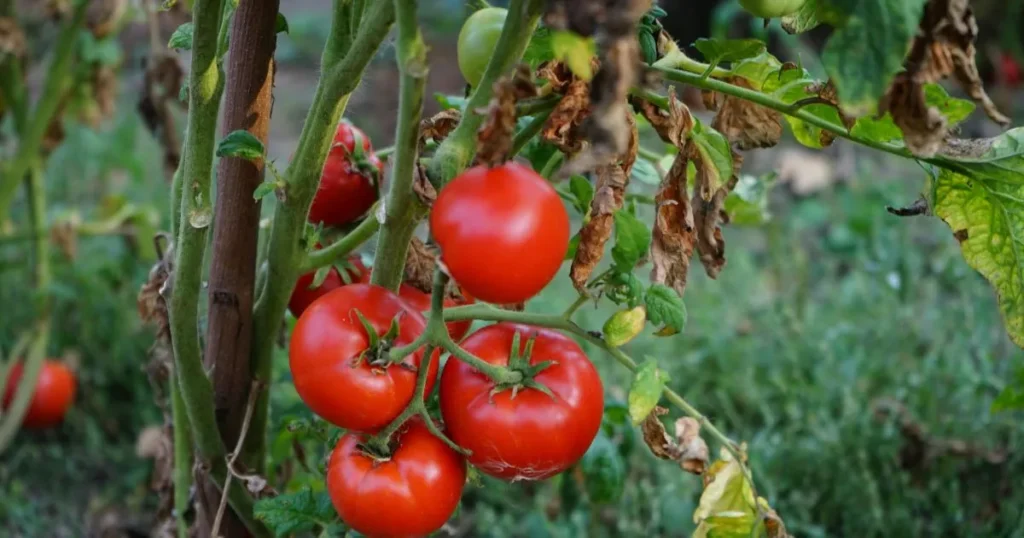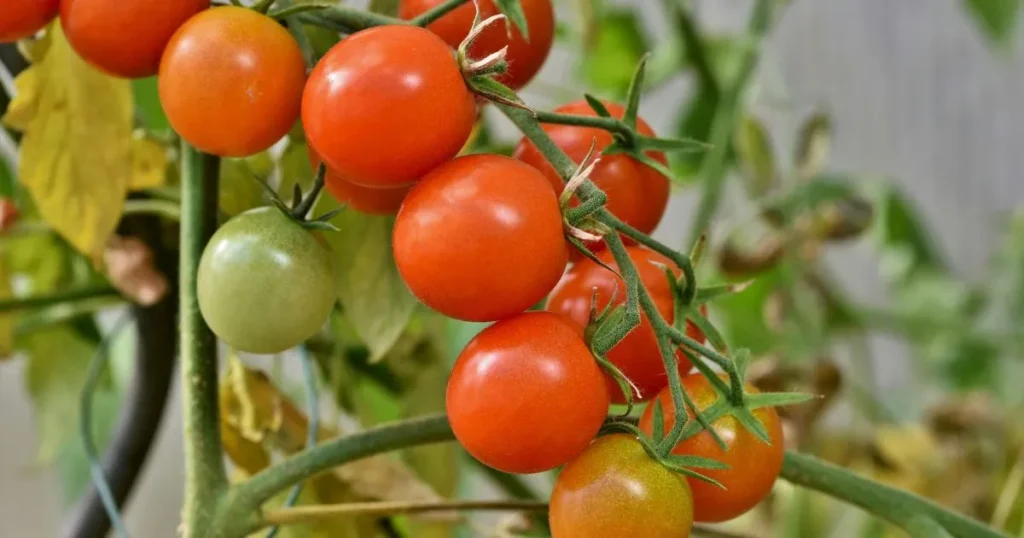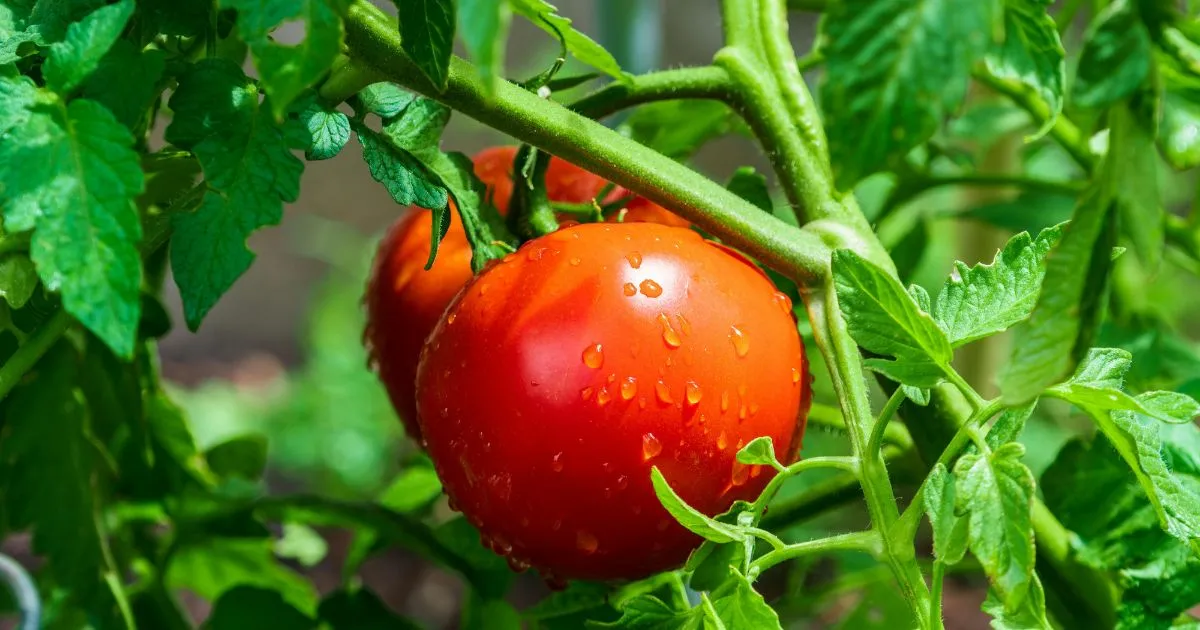Table of Contents
Growing tomato plants indoors is a rewarding experience. Whether you’re living in a small apartment or just looking for a way to extend your gardening season, cultivating tomatoes indoors allows you to enjoy fresh, homegrown fruit all year round. This guide will provide you with detailed instructions on how to successfully grow tomato plants inside, from selecting the right varieties to caring for them and troubleshooting common problems. Let’s dive into growing tomato plants inside!
Section 1: Introduction to Growing Tomato Plants Inside
Tomatoes are a popular choice for indoor gardening, as they are relatively easy to grow and thrive in containers. However, growing tomatoes inside presents its own unique challenges. In this section, we will cover why tomatoes are ideal for indoor gardens and the basic needs they require to grow successfully.
Why Grow Tomatoes Inside?
Growing tomato plants indoors has several advantages:
- Year-round harvest: Indoor tomato plants can produce fruit even during colder months when outdoor gardening is not an option.
- Controlled environment: You can control the temperature, humidity, and light conditions, ensuring your tomatoes grow optimally.
- Space efficiency: Even with limited space, indoor gardening allows you to grow tomatoes on windowsills, balconies, or small containers.
The Ideal Indoor Growing Environment for Tomato Plants
Tomato plants are tropical plants, and for them to thrive indoors, it’s essential to recreate their ideal growing conditions. Below are the critical factors for a healthy indoor tomato garden:
- Temperature : Tomato plants grow best in temperatures between 65°F (18°C) and 85°F (29°C). Keeping them in a warm environment is crucial, especially in the early stages of growth.
- Humidity : Aim for humidity levels between 40% and 60% for optimal tomato growth. Indoor air can be quite dry, so using a humidifier or placing a humidity tray near your plants can help.
- Air circulation : Good air circulation is essential to prevent diseases and to promote healthy plant development. Ensure that your tomatoes have enough airflow.
Section 2: Selecting the Right Tomato Varieties
Choosing the right variety of tomato is key when growing indoors. Some varieties are better suited to container gardening and indoor spaces than others. Here we discuss the best types for indoor cultivation.
Compact and Dwarf Varieties for Indoor Growing
When selecting tomato varieties for indoor gardening, opt for compact, determinate, or dwarf varieties that are more suited to container life. Here are some excellent choices for indoor tomato plants:
- Tiny Tim : A small, dwarf variety that grows to about 12-18 inches in height and produces small, flavorful tomatoes.
- Patio Princess : Known for its compact size, this variety produces small, tasty fruit on a bushy plant that reaches about 18 inches.
- Tumbling Tom : A cherry tomato variety that grows well in hanging baskets or containers, making it ideal for small spaces.
- Bush Goliath : This determinate variety is perfect for containers and produces medium-sized tomatoes.
Determinate vs. Indeterminate Varieties
Understanding the difference between determinate and indeterminate tomato varieties is crucial for indoor gardeners.
- Determinate Tomatoes : These tomatoes grow to a certain size and stop, producing all their fruit in a short period. They are perfect for those who want a quick harvest.
- Indeterminate Tomatoes : These plants keep growing and producing fruit throughout the season. They require more space and pruning but can offer a longer harvest period.

Section 3: Preparing for Indoor Tomato Gardening
Now that you’ve selected your tomato variety, it’s time to set up the perfect growing environment. In this section, we will discuss the essential steps for planting and preparing your indoor space for your tomatoes.
Selecting Containers for Indoor Tomato Plants
Containers are vital for growing tomatoes indoors. Choose a container that provides enough space for the roots to grow while ensuring proper drainage. Here’s what to look for:
- Container size : A 5-gallon container is ideal for most indoor tomato plants. Larger containers provide room for the roots to expand, leading to healthier plants.
- Drainage : Ensure your containers have drainage holes to prevent water from collecting at the bottom, which can cause root rot.
Choosing the Right Potting Mix
The soil you choose is just as important as the container. Tomatoes prefer a well-draining, nutrient-rich potting mix.
- Soil type : Use a high-quality potting mix that’s designed for vegetables or tomatoes. Avoid using regular garden soil, which may be too heavy for container plants.
- Soil amendments : Consider adding organic compost or perlite to the mix for better drainage and nutrient availability.
Section 4: Planting Tomato Seeds or Seedlings
Once you have everything set up, it’s time to plant your tomatoes. Whether you’re starting from seeds or using seedlings, follow these tips to ensure success.
Starting from Seeds
Growing tomatoes from seeds gives you the most control over the growing process. Here’s how to get started:
- Seed trays : Use seed trays or small containers to plant your seeds. Fill them with a light, well-draining seed-starting mix.
- Germination : Keep the seeds in a warm location, ideally between 75°F-85°F. Ensure they have plenty of light once they start to sprout.
Transplanting Seedlings
If you’ve purchased seedlings, it’s important to transplant them carefully into larger containers. Here’s what to do:
- Handle with care : Gently remove the seedlings from their original pots without damaging the roots.
- Planting depth : Plant the seedlings deep in the container to promote strong root growth. Ensure that the base of the plant is level with the soil surface.
Section 5: Caring for Tomato Plants Indoors
Once your tomato plants are in the ground, they need consistent care to thrive. Let’s look at how to water, fertilize, prune, and support your plants.
Watering Indoor Tomatoes
Watering is one of the most crucial aspects of indoor tomato care. Proper watering ensures healthy growth and fruit production.
- When to water : Water your tomatoes when the top inch of soil feels dry. Water deeply until it starts draining out of the bottom of the container.
- Watering techniques : Water at the base of the plant to avoid getting water on the leaves, which can promote diseases like blight.

Fertilizing Indoor Tomatoes
Tomatoes are heavy feeders and require regular fertilization to promote healthy growth.
- Balanced fertilizers : Use a balanced fertilizer designed for tomatoes, and apply it every two weeks during the growing season.
- Organic options : If you prefer organic gardening, compost tea or fish emulsion can be excellent alternatives.
Section 6: Pruning and Supporting Tomato Plants
As your tomato plants grow, they need to be pruned and supported to ensure a healthy harvest.
Pruning Tomato Plants
Pruning helps manage the plant’s size and encourages better air circulation, which can prevent diseases.
- Remove suckers : Suckers are shoots that grow between the main stem and branches. Regularly remove them to promote stronger growth.
- Cutting back dead or damaged leaves : Trim any yellow or diseased leaves to improve plant health and appearance.
Supporting Tomato Plants
Support structures, like stakes or cages, help prevent your plants from toppling over as they grow.
- Stakes : Insert stakes into the soil early in the plant’s growth to support the stem and prevent breakage.
- Cages : Tomato cages are an excellent option for providing structure and stability as your plants grow.
Section 7: Troubleshooting Common Problems
Even indoor tomatoes can experience issues. In this section, we’ll discuss common problems and how to address them.
Pests and Diseases
Pests and diseases can still affect indoor tomato plants. Here are some common issues:
- Aphids : Aphids are tiny pests that suck sap from the plants. Treat them with insecticidal soap or neem oil.
- Powdery mildew : This fungal disease shows up as a white powder on the leaves. Remove affected leaves and improve air circulation to prevent further spread.
Nutrient Deficiencies
Indoor tomatoes may exhibit signs of nutrient deficiencies, such as yellowing leaves or poor growth.
- Nitrogen deficiency : If the leaves turn yellow, your plant may need more nitrogen. Use a nitrogen-rich fertilizer to correct this.
- Potassium deficiency : Curling leaves may indicate a lack of potassium. Supplement with a potassium-rich fertilizer.
Conclusion
Growing tomato plants inside can be a fun and rewarding experience. With the right variety, proper care, and attention to detail, you can enjoy fresh, homegrown tomatoes year-round. By following the guidelines in this article, you’ll be well on your way to creating a successful indoor tomato garden.
FAQs
How long does it take to grow tomatoes indoors?
It typically takes about 50-70 days for tomatoes to mature indoors, depending on the variety. Dwarf varieties usually mature faster.
Can I grow tomatoes indoors with no sunlight?
No sunlight can make it very difficult for tomatoes to grow. They need at least 6-8 hours of light daily. If natural light is insufficient, supplement with grow lights.
How often should I water my indoor tomato plants?
Water your tomato plants when the top inch of soil feels dry. Be sure to water thoroughly, but avoid overwatering, which can lead to root rot.

